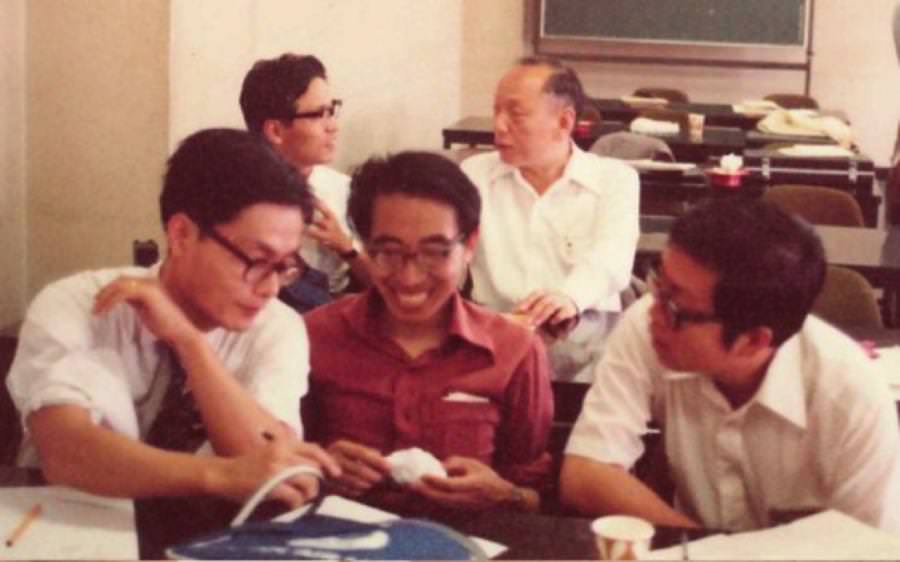by Takushiro Ochiai
The life and academic achievements of Shoshichi Kobayashi give a definition of what a great mathematician should be. He left us numerous manuscripts of high originality, comparable to great musical compositions. His books, taken as a whole, harmonize splendidly into a great symphony. Though aware of my inability to reach the height of his talent, I dare to write this article to bring attention to the fine personal character and remarkable academic achievements of Shoshichi Kobayashi, outstanding mathematician, mentor, and colleague.

Kobayashi published papers in academic journals every year without fail, starting from his virgin paper in 1954 until his last days. Among a total of 134 papers, there are 85 single-author papers and 49 collaborative works. A unique feature of his single-author publications is their brevity. There are 34 papers of less than five pages, 28 papers of less than ten pages, and 15 papers of less than 28 pages. Every one of them is deep and rich in content with transparent and easily comprehensible explanations, as is evidenced by his invention of the concepts of the Kobayashi distance, hyperbolic complex manifolds, and the Hermitian–Einstein vector bundles. Inspired by Chern’s result, which further improved on the generalization of the classical Schwarz’s lemma by L. Ahlfors (“The holomorphic maps between Hermitian manifolds” by S. S. Chern), Kobayashi became interested in Schwarz’s lemma and read all the related papers one by one. He especially admired Carathéodory’s point of view and devoted himself to and took advantage of the holomorphic maps, which he admitted led him to the discovery of the Kobayashi distance.
Expanding all his papers, paying attention to the historic background and development, Kobayashi subsequently published thirteen self-contained books, every one of which is easily comprehensible by graduate students. Professor Kobayashi once said to me: “When I write books, I prepare one or two years for the first manuscript and make certain to give lectures based on it for one or two years in order to deepen the contents before finally completing the final manuscript.”
To convey to the public his philosophy of mathematics, or rather of differential geometry, I include here passages from his essays in Japanese as published in well-known magazines on mathematical sciences which deeply reflect his mathematical achievements. The transparency, beauty, and open-mindedness of his viewpoints, which he sharpened well to the limit, express my personal and eternal yearning.
Suuri Kagaku, August, 1965:
Differential geometry is one viewpoint over mathematics, and a method, in itself. When various fields in mathematics reach the point of being well understood, the phenomenon called algebraization occurs. I think it is possible to see different fields of mathematics from a differential geometric viewpoint as well as from an algebraic viewpoint. The raison d’être of differential geometry is to offer a new viewpoint and powerful methods rather than being considered like a theory of numbers. Moreover, the concepts and methods understood from a geometric point of view are so natural (different from artificially created nonsense) that development beyond anticipation later occurs in many cases. Differential geometry can produce limitless developments by carrying its methods into all the fields of mathematics. It is especially important, then, to know how to make use of the differential geometric method to make connections in fields such as the theory of functions (one or several complex variables), algebraic geometry, topology, a differential equation theory.
Sūgaku Seminar, December, 1965:
Wonderful theorems in mathematics are proven with breakthroughs of originality which cause everyone to understand them. A mathematician gets the greatest feeling of happiness when he finds such a new idea. A problem, which is solved merely by understanding and following a routine process, is a petty problem, and a theorem whose proof does not use any idea which comes involuntarily, is really tedious. It seems that any problem which does not open a new field, or any result which has no application in any other field of mathematics, disappears after a while. An eternal life is given only to a beautiful result.
Sūgaku Seminar, September, 1967:
Some percentage of the work in mathematics consists of the creation of suitable notation. Suitable notation makes calculations easy to handle, makes formulas look beautiful and easy to memorize, and makes theorems apparent at a glance. Suitable notation is important not only from a passive role to make descriptions beautiful and easy, but also from an active role, even to suggesting what should be done next. We cannot explain in one word what kind of notation is suitable or what kind of theorem is good. It is a mathematical sense that will take it in somehow.
Suuri Kagaku, February, 2001:
When you study subjects in mathematics which are not restricted to calculus, I would like to urge you to study the history of its development together by all means. Since modern mathematics requires too much stringency, lectures as well as textbooks rarely touch historical background. However, I think that one can understand the subject more deeply by getting to know the history and why this concept was produced. I want people who become school teachers to study the history of mathematics by all means.
Through my acquaintance with Professor Kobayashi for many years, I am convinced that his passion for mathematics was motivated by his love for human beings and for scholarship. I am extremely fortunate to have collaborated with Professor Kobayashi on some of his mathematical work.